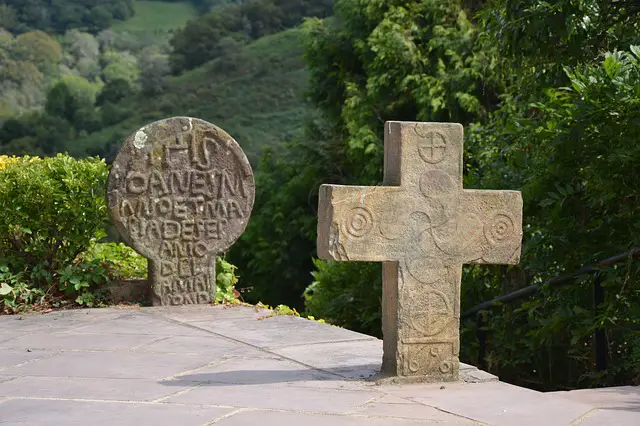Basque is a rather unique language in Europe. Squeezed in between Spain and France, Basque country is home to most of the native Basque speakers in the world, although a substantial Basque diaspora has spread the language to South America, in addition to various other communities around the world.
Here are 10 more interesting facts about the Basque language and culture which will make you want to take Basque lessons immediately:
Table of Contents
1. It’s one of the few non-Indo-European languages in Europe
Most languages in Europe come from the same language family – Indo-European. From that “tree” different branches have spread out to create the Germanic languages like English, German, and Dutch, and Romance languages, such as Italian and Romanian. Along with Basque, only a handful of languages spoken in Europe are outside of this family tree, however. These include, for example, Maltese, Hungarian, Estonian, and Finnish.
2. In fact, Basque is a language isolate
What makes Basque even more fascinating is that it’s a language isolate. That means that it’s not related to any other living language and its origin is a mystery. While French and Spanish, the two major languages that surround the area where Basque is mostly spoken, can trace their ancestry back to Latin, the Basque language itself has no such clear heredity.
3. However, some theories exist as to its origin
Although it’s difficult to trace back the ancestry of Basque, a few theories exist as to its origin. It’s thought that Basque was present in Europe before the arrival of the Indo-European languages. Basque country is thought to have been inhabited by the Basque people long before the Celts and Romans brought their languages to the region. Others say that Basque came from Caucasia, referring to similarities with Georgian, or even Africa. None of these theories is absolutely conclusive, however.
4. The word “stone” might give us a glimpse into Basque history
Another controversial theory exists about Basque and it has to do with the Basque word for “stone” – haitz. Namely, several names for various tools originate from this one root: “axe” – aizkora, “hoe” – aiztur, “knife” – aizto. This has led some to believe that Basque actually originates from prehistoric times when these tools were made of stone. The theory remains controversial, however.
5. The Basque language (and culture) is going through a revival
Since some of the Basque country fell under Franco’s dictatorship in Spain, the public use of the language was in some cases discouraged. Not surprisingly, this prohibition was more strictly applied to the areas that hadn’t supported Franco’s takeover. Now, however, the culture and language is going through a revival period and it’s becoming an increasingly popular language to learn.
6. It’s difficult to say how many Basque speakers there are
Official statistics for speakers of Basque as both the first and second language are somewhat difficult to gather, so the estimates of how many Basque speakers there are, also vary greatly. Ethnologue lists the number of speakers at around 500,000, while less conservative sources estimate a number twice as high.
7. Basque is another candidate for the most complicated language
The British Foreign Office seems to think that Basque is the hardest language for native English speakers to learn. Of course, there really is no such thing as a hard language but their concern is somewhat understandable. Since Basque isn’t related to any other European language, it’s difficult (if not impossible) to find syntactical similarities which might make learning it easier. In addition, even if Basque is spoken in a relatively small region, there are still vast differences across the various dialects.
8. Speaking of dialects, there are many
Even by the most optimistic estimates, Basque is still a relatively small language. But that doesn’t mean it’s uniform. Depending on whom you ask, Basque has five to nine different dialects. As it happens in mountainous regions where every village can develop their own tongue, these dialects differ from one another to an extent where speakers from different regions might find it difficult to understand each other.
9. Standardised Basque is a somewhat new phenomenon
It was only in the late 1960s that the Basque Language Academy got to work on creating a standardised version of the language. It’s heavily based on the central Basque dialect and is the version that’s used almost everywhere in official business, media, and education. However, most older speakers far from cities remain attached to their regional dialects.
10. Basque has its own font and number system
There is a certain typeface that is very much traditionally Basque which you will find everywhere in Basque country. This modern font has been influenced by various engravings on old tombstones. For an idea, see the title picture of this blog post. This has developed into a distinctly Basque feature and these days, you can even download a Basque font pack for personal use.
But the peculiarities don’t stop there.
Basque millers also used their own number system which, much like the language, has a very murky origin. In this system, symbols are arranged on either a horizontal or vertical axis. Single digits and fractions appear on one side of the vertical line or are arranged according to increasing value when used horizontally. Numbers recorded in this fashion rarely go over 100.
—
If you’re looking for more interesting facts, you can also check out what we’ve found out about French and Albanian or, if this post has spiked your interest in the language, you can sign up for Basque lessons with a private teacher below:

